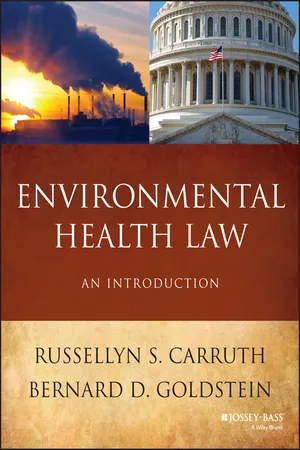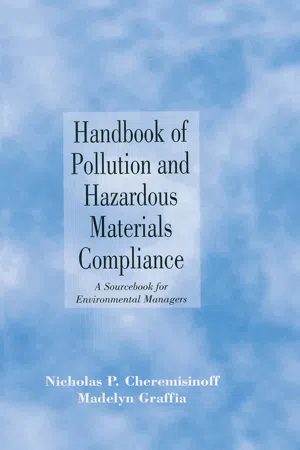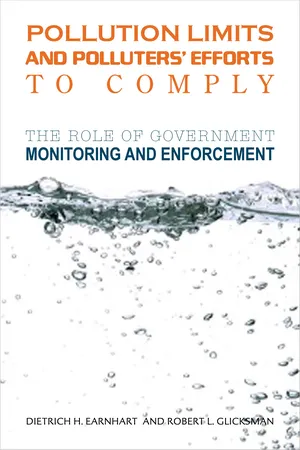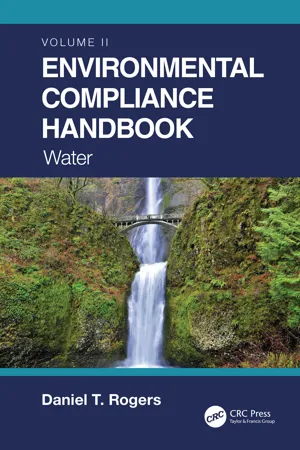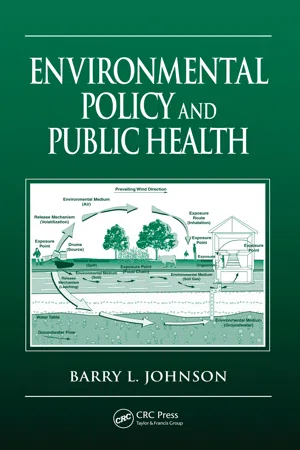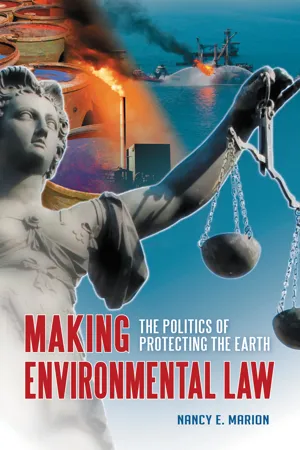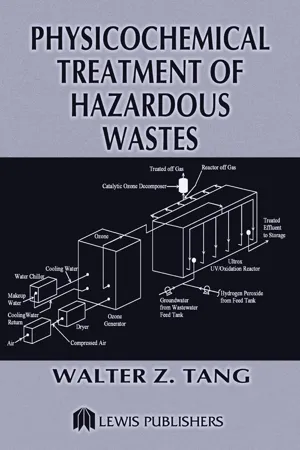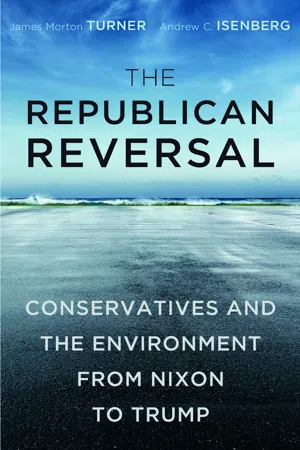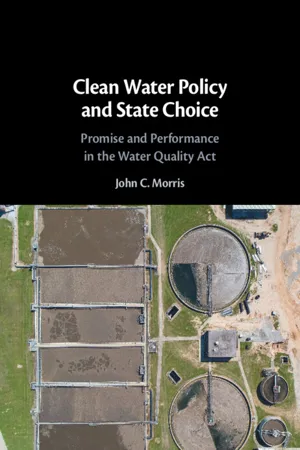Law
Clean Water Act
The Clean Water Act is a US federal law that regulates and aims to improve the quality of the nation's water resources. It sets standards for wastewater discharge and pollutants in surface waters, and provides funding for wastewater treatment facilities. The law also includes provisions for protecting wetlands and controlling nonpoint source pollution.
Written by Perlego with AI-assistance
Related key terms
1 of 5
10 Key excerpts on "Clean Water Act"
- No longer available |Learn more
Environmental Health Law
An Introduction
- Russellyn S. Carruth, Bernard D. Goldstein(Authors)
- 2013(Publication Date)
- Jossey-Bass(Publisher)
1 is the main federal act protecting against pollution of surface waters, although there are two major water issues not included. The protection of drinking water is covered by the Safe Drinking Water Act; oil spill prevention and response are covered by the Oil Pollution Act. These two acts are discussed in later chapters.The Clean Water Act's chief target is industrial pollution discharged from point sources (such as pipes). The act does not directly regulate sheet runoff, notably urban storm runoff or agricultural runoff—two intractable problems. Despite the act's shortcomings and the enormity of challenges it faces, it has succeeded in greatly improving the quality of surface waters in America. Stretches of the Cuyahoga River that were virtually dead in 1969 now support abundant aquatic life, including steelhead trout and dozens of other fish species.SCOPE AND BASICS
This act has two names. Almost everybody calls it the Clean Water Act. But it's also known as the Federal Water Pollution Control Act, so you may occasionally see that name.Legislative Goal
The goal of the Clean Water Act is to restore and maintain the chemical, physical, and biological integrity of the nation's waters. As part of this, the act seeks water quality that is fishable and swimmable. The act also seeks to eliminate discharge of pollutants. This latter goal was not met by the original deadline of 1985, nor has it been achieved even today. But progress has been made; pollutant discharges have been reduced, although not eliminated.The Discharge Prohibition
The CWA makes it unlawful for anyone to discharge any pollutant except in compliance with the act. This key provision is commonly called the discharge prohibition, and it is the foundation of federal strategy against water pollution. To understand the scope and impact of the prohibition, and of the act itself, requires a few definitions.2 - eBook - PDF
Handbook of Pollution and Hazardous Materials Compliance
A Sourcebook for Environmental Managers
- Nicholas P. Cheremisinoff, Madelyn Graffia(Authors)
- 1996(Publication Date)
- CRC Press(Publisher)
In summary, the Federal Water Pollution Control Act (commonly referred to as the Clean Water Act) was intended to protect the surface water of the United States. The means to accomplish this intention is the requirement that the discharge of pollutants to the U.S. waters be controlled and prevented. Although the Federal Water Pollution Control Law has routes extended back in time as far back as 1899 with the Refuse Act, the law and its many revisions was unworkable and ineffectual to directly enforce environmentally oriented limits of the discharge of pollutants. Then in 1972, Congress passed an important legislation, Public Law 92-500 to clearly provide a basic framework for an effective national environmental act, which are: national effluent limitations, water quality standards, the permitting program, special provisions for oil spills and toxic substances, and a publicly-owned treatment works construction grant program. The CWA in its current form, which has been hailed as the most tested, most innovative, and most enforceable of all the federal environmental statutes, was amended in 1987 to tighten the focus on toxics dischargers, force action on toxics-oriented water quality standards, attempt to resolve long-standing problems with the effort to regulate storm water runoff, and to strengthen the enforcement mechanisms. The CWA is to restore and maintain the chemical, physical and biological integrity of the nation's water. It is to eliminate the discharge of pollutants into surface waters with a national policy that the discharge of toxic pollutants in toxic amounts be prohibited. The Clean Water Act 97 Perhaps what is important here is the meaning of the term toxics as it is applied to the regulated and hazardous waste substances. Let us first define some of these related terminologies. • Pollutant— means all waste material, whether or not that material has value at the time it is discharged. - eBook - ePub
Pollution Limits and Polluters’ Efforts to Comply
The Role of Government Monitoring and Enforcement
- Dietrich H. Earnhart, Robert L. Glicksman(Authors)
- 2011(Publication Date)
- Stanford Economics and Finance(Publisher)
CHAPTER ONEIntroduction
1.1. THE PROMISE AND PITFALLS OF THE Clean Water Act
In 1972, Congress adopted one of the nation’s landmark environmental laws, the Federal Water Pollution Control Act Amendments, now known as the Clean Water Act. Passage was prompted by concern over the egregious state of the quality of the nation’s coastal waters, rivers, lakes, and streams, some of which were so contaminated by industrial chemicals that they caught fire. Others were befouled with oil from events such as the Santa Barbara, California, oil spill in January 1969, which produced images on television news broadcasts of oil slicks and oilsoaked birds and marine mammals. The new law sought to “restore and maintain the chemical, physical, and biological integrity of the Nation’s waters” by establishing a goal of eliminating the discharge of pollutants into navigable waters by 1985.That lofty goal was obviously not achieved by the target date and is still little more than a distant and perhaps impossible dream. There is little question, however, that over the nearly four decades since the enactment of the Clean Water Act, enormous progress has been made in cleaning up the nation’s waters. The quality of major rivers such as the Hudson and the Potomac has improved sufficiently to allow recreational uses that most would not have dared to pursue in the late 1960s and early 1970s. Few would dispute the notion that the Clean Water Act has been an enormously successful pollution abatement initiative.Yet, as the first decade of the twenty-first century approached an end, and with the fortieth anniversary of the Clean Water Act on the horizon, trouble was brewing. From many quarters, disturbing reports of failures to enforce the law streamed in. In a lead editorial published late in 2009, the New York Times wrote that “even its staunchest allies agree than the act has grown old and fallen well short of its goals, crippled by uneven and sometimes nonexistent enforcement by state and federal agencies” (New York Times - No longer available |Learn more
- (Author)
- 2014(Publication Date)
- Academic Studio(Publisher)
Recent developments Representative Frank Pallone introduced H.R. 1310, the Clean Water Protection Act, on March 4, 2009. The bill would amend the CWA by redefining the term, fill material to exclude any pollutant discharged into the water primarily to dispose of waste. This amendment is intended to restrict the practice of mountaintop removal mining. Senator Russell Feingold introduced S. 787, the Clean Water Restoration Act, on April 2, 2009, to amend the CWA and clarify the jurisdiction of waters of the United States. The intent of the bill is to restore protections for rivers, streams and wetlands that may be subject to question due to the recent Supreme Court rulings in SWANCC and Rapanos. On December 3, 2009, Representative Donna Edwards introduced H.R. 4202, the Green Infrastructure for Clean Water Act of 2009. The bill would create Centers of Excellence for green infrastructure (GI) research, establish a GI program at EPA and authorize issuance of grants for GI projects. GI projects are designed to improve water quality through better management of stormwater runoff. Representative James Oberstar introduced H.R. 5088, America's Commitment to Clean Water Act, on April 21, 2010. The bill would restore the definition of waters of the United States to that in place before the SWANCC and Rapanos court decisions. Clean Water Act (Ontario) The Clean Water Act (S.O. 2006, Chapter 22) is a law enacted by the Legislative Assembly of Ontario, Canada. The purpose of this Act is to protect existing and future sources of drinking water. The Clean Water Act, 2006 (Bill 43) is a major part of the Ontario government’s commitment to ensuring that every Ontarian has access to safe drinking water. Protecting water at its source is the first step in the multi-barrier approach to source water protection. - eBook - ePub
- Daniel T. Rogers(Author)
- 2022(Publication Date)
- CRC Press(Publisher)
5 Clean Water Act
DOI: 10.1201/9781003150114-55.1 INTRODUCTION
In the late 1960s, there were several indications that surface waters of the United States were heavily impacted and polluted through human activities. Some of these were (USEPA 2021a) :- Pollution in Chesapeake Bay killed fish and resulted in an estimated loss to the fishing industry of $3 million annually in 1968.
- Bacteria levels in the Hudson River were 170 times greater than what was considered the safe limit as measured in 1969.
- An estimated 26 million fish were killed in Lake Thonotosassa, Florida, due to wastewater discharges from four food processing plants in 1969.
- A floating oil slick on the Cuyahoga River, just southeast of Cleveland, Ohio, caught fire, causing significant damage to two railroad trestles. The cause of the fire was never determined, but investigations concluded that discharges of volatile organic compounds to the River with low flashpoints provided enough fuel that a passing train, for instance, could have provided an ignition source to start the fire.
- The Department of Health, Education and Welfare’s Bureau of Water Hygiene reported that 30% of drinking water samples had detected chemicals exceeding recommended Public Health Service limits.
- A study by the FDA in 1971 concluded that over 70% of samples of swordfish had mercury at concentrations that were considered unfit for human consumption.
These impacts, along with pollution in Lake Erie, made it clear to the United States Congress that regulations needed to be developed to protect the nation’s water, which then led to the Clean Water Act of 1972.5.2 Clean Water Act OVERVIEW
By the time the Clean Water Act was passed in 1972, the USEPA estimated that nearly two-thirds of the United States’ lakes, rivers, and coastal waters had become unsafe for fishing or swimming due to untreated sewerage being dumped into open water. To address these concerns, USEPA has divided the CWA into four subgroups (USEPA 2021a) - eBook - PDF
- Barry L. Johnson(Author)
- 2006(Publication Date)
- CRC Press(Publisher)
187 5 Air and Water Statutes 5.1 INTRODUCTION Among the most important environmental statutes are those for control of air and water pollution. These statutes are central to the public health necessity of safe air and water in which we come into daily contact. Described in this chapter are the federal Clean Air Act, the Clean Water Act, and the Safe Drinking Water Act. Each act is presented in regard to its history, key public health provisions, and public health significance. Of note will be each statute’s embedded policies of regulatory approach to pollution control. Both emission and quality standards are found throughout these three statutes. How the statutes involve interplay and shared responsibilities between federal and state govern-ment will be discussed. But it is particularly important to understand these statutes for their public health importance, as discussed throughout the chapter. 5.2 THE CLEAN AIR ACT 5.2.1 H ISTORY Pollution of the air we breathe for life’s very existence is a problem likely dating from antiquity, perhaps from the time when humans first came into contact with smoke from fires used for warmth and to ward off predators. One source cites an action in the year 1306 when citizens of London petitioned their government to take action to reduce levels of smoke in ambient air. In response, King Edward I issued a royal proclama-tion to prohibit artificers (i.e., craftsmen) from burning sea coal, as distinguished from charcoal, in their furnaces [1]. This is an example of government taking action against the effects of air pollution, which can be defined as the contamination of the atmo-sphere by gaseous, liquid, or solid wastes. Given this fourteenth-century example of one government’s attempts to improve citizens’ air quality, it is not surprising to learn that in the twentieth century the U.S. public’s concern about air pollution also led to legislative action. - eBook - PDF
Making Environmental Law
The Politics of Protecting the Earth
- Nancy E. Marion(Author)
- 2011(Publication Date)
- Praeger(Publisher)
The bill was aimed at making the nation’s waterways virtually pollution-free by 1985. The earlier water laws that had been enacted in 1948, 1956, and 1965 had limited the role of the federal government to guiding, supporting research and investigation, and providing grants to states. The 1972 law changed this by creating a centralized program with federal oversight of the states. The law became the most comprehensive and expensive environmental legisla- tion in history. 86 The authors of the bill wrote that there was a need for an interim goal of water quality to provide for the protection and propagation of fish, shell- fish, and wildlife and for recreation in and on the water. 87 They also wrote that “due regards shall be given to the improvements which are necessary to conserve such waters for the protection and propagation of fish and aquatic life and wildlife, recreational purposes, and the withdrawal of such waters for public water supply, agricultural, industrial, and other purposes.” 88 Therefore, Congress mandated that all waters be “fishable and swimmable” by 1983, with zero pollution discharge by 1985. To do this, Congress set forth certain mandates. One had to do with setting standards for discharges into waters. For the first time, the EPA was directed to set uniform, national standards and limits on effluents for all major sources of water pollution. The standards were called “effluent guidelines” and were designed to make industries create and use the latest available technology to reduce pollution. All direct dischargers into navi- gable waterways had to satisfy two different standards, one relating to water 98 Making Environmental Law quality, the other to effluent limits. - Walter Z. Tang(Author)
- 2003(Publication Date)
- CRC Press(Publisher)
These events caused the govern-ment to pass the Federal Water Pollution Control Act Amendments of 1972, which created what we now know as the CWA. Earlier versions of the act were the primary vehicles that provided federal money for local water pol-lution control construction. 4 Physicochemical Treatment of Hazardous Wastes The CWA is based on a simple idea: No discharges to water are allowed by anyone without a permit. In regard to the issue of private property vs. federal government intervention, the CWA establishes regulations only for discharges to the waters of the United States. This includes all navigable waters, their tributaries, and areas that flow to waters of the United States at some point during the year (e.g., dry riverbeds). Subsequent legal deci-sions have included the groundwater that eventually flows to a body of water in the United States. The CWA has three levels of goals (Adler et al., 1993): • Zero discharge is allowed. • All waters should be fishable and allow swimming. • No toxicities are allowed in any waters of the United States. The CWA established a National Pollutant Discharge Elimination System (NPDES) program to be developed and overseen by the U.S. Environmental Protection Agency (USEPA). It requires that all dischargers of any type of pollutant apply for an NPDES permit. These permits set specific limits for pollutant discharges and attempt to stop pollution at its source. The two main groups that must have an NPDES permit are industrial facilities and wastewater utilities. The effluent limitations vary for each NPDES permit; however, most limitations are taken from technology-based effluent limita-tion guidelines issued by the USEPA. As a result, different levels of effluent limitations have been established depending on the treatment efficiency of different technologies, including: • Best practicable control technology (BPT) is the minimum level set for all pollutants.- eBook - PDF
The Republican Reversal
Conservatives and the Environment from Nixon to Trump
- James Morton Turner, Andrew C. Isenberg(Authors)
- 2018(Publication Date)
- Harvard University Press(Publisher)
It was charged, in partnership with the states, with im-plementing the nation’s foundational environmental laws, which had been enacted with overwhelming bipartisan majorities in the 1970s: the Clean Air Act, the Clean Water Act, the Toxic Substances Control Act, and the Safe Drinking Water Act, among others. Each of those laws em-powered the federal government to set strict standards—based first and foremost on the goal of protecting human health—that required munici-palities, manufacturers, utilities, automakers, and farmers to adopt new technologies and practices to clean up the environment and protect public health. With the EPA in the lead, the nation accomplished goals that had seemed nearly impossible in 1970. Automakers implemented pollution controls that cut some pollutants from new cars by more than 90 percent. Oil refiners phased out leaded gasoline. State and federal gov-ernments invested more than $30 billion in public funds in wastewater treatment plants. By the early 1980s, studies credited the Clean Air Act alone with extending the life of the average American by a full year. 3 Figure 3-1 Pollution was poorly controlled in the 1970s, as seen in this photograph in Detroit, Michigan, July 1973. Source: Frank J. Aleksandrowicz, photographer, EPA. DOCUMERICA, Records of the Environmental Protection Agency, 1944–2006 (Record Group 412), U.S. National Archives and Records Administration. THE COST OF CLEAN AIR AND WATER 100 Yet, the passage of a law is never the end of the story. The Civil Rights Act of 1964 and the Voting Rights Act of 1965 hardly marked the end of the civil rights movement. 4 The Americans with Disabilities Act of 1990 hardly resolved the question of who might be considered disabled. And the passage of the Affordable Care Act in 2010 did not close the books on health care reform. In every instance, political and legal contestation continued. - eBook - PDF
Clean Water Policy and State Choice
Promise and Performance in the Water Quality Act
- John C. Morris(Author)
- 2022(Publication Date)
- Cambridge University Press(Publisher)
5 Features of the Water Quality Act of 1987 The Water Quality Act (WQA) of 1987 was, in many ways, an incremental step forward from the Clean Water Act (CWA) of 1972. Much of the language of the WQA was retained in the same form as found in the CWA, and many of the changes represent minor changes to existing programs, new dates to meet certain program goals, and similar amending language. The overall purpose of the Acts is the same, as are many of the programs contained within the two Acts. Indeed, outside of the inclusion of a new program to fund wastewater treatment facilities in states, the two Acts are very much alike. As we will see, even with the addition of a new funding mechanism in the form of a revolving loan fund program, the existing funding program of categorical grants remained in the WQA. Moreover, not only did the previous grant program remain in the legislation (and authorized for three additional years), Congress continued to appropriate funds under the categorical grant program for more than two decades after the authorization had expired. Perhaps the biggest, and arguably most important, change is the addition of a new title to the Water Quality Act. Title VI creates the Clean Water State Revolving Loan Fund (CWSRF) program, which fundamentally changes the relationships between the national government and states (and, not coincidentally, local governments as well) in the arena of national water quality policy. The original funding mechanism of the CWA, Title II, described a categorical grants program that allowed Congress, through the Environmental Protection Agency (EPA), to make grants directly to eligible municipalities, effectively bypassing state decision makers in the process. This was a very deliberate decision made in the CWA, and had been modeled on a program first enshrined into law as a part of the Federal Water Pollution Control Act (FWPCA) of 1948 and funded in the 1956 amendments to the FWPCA.
Index pages curate the most relevant extracts from our library of academic textbooks. They’ve been created using an in-house natural language model (NLM), each adding context and meaning to key research topics.
